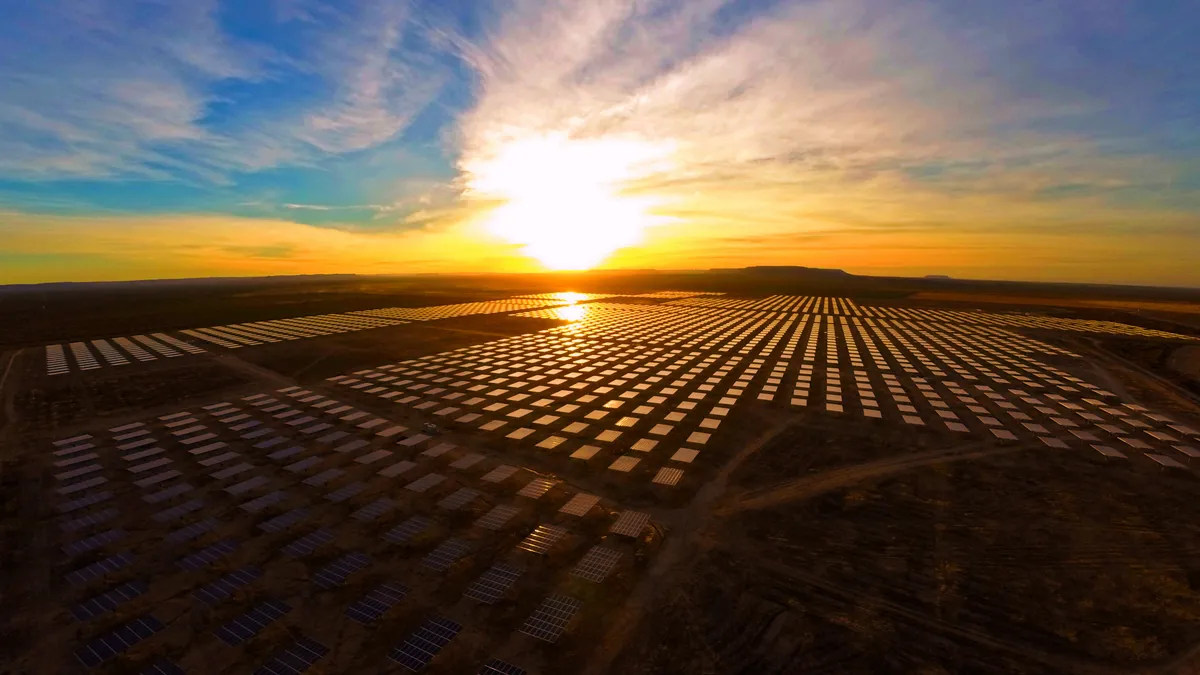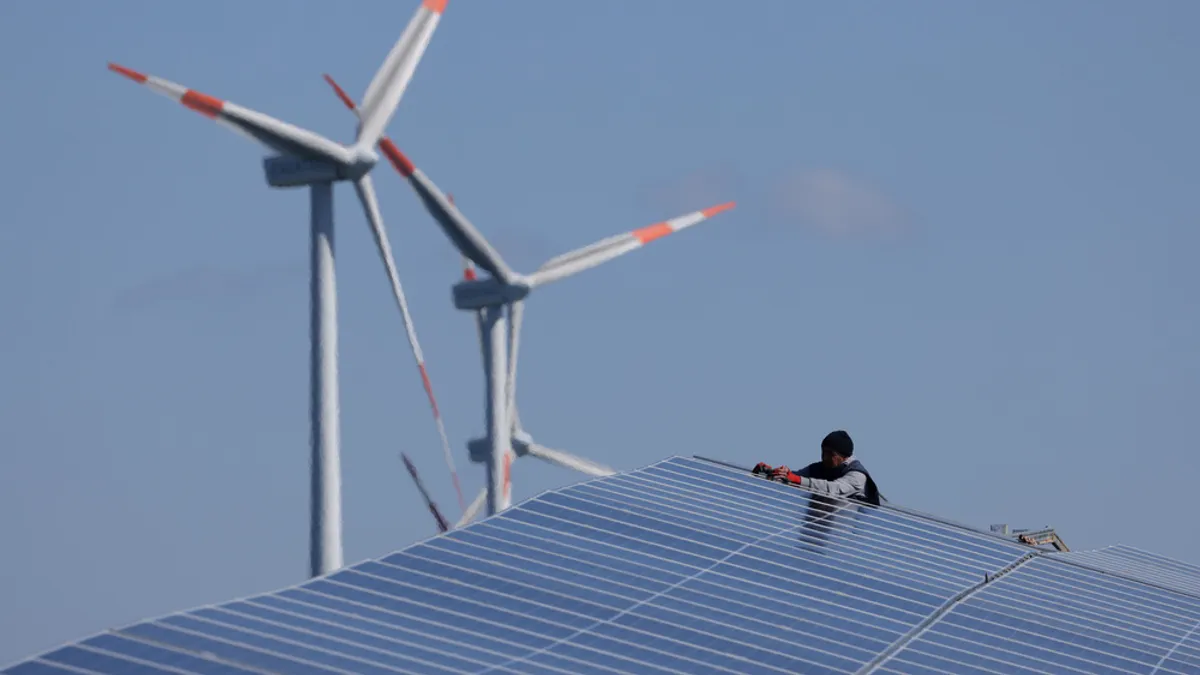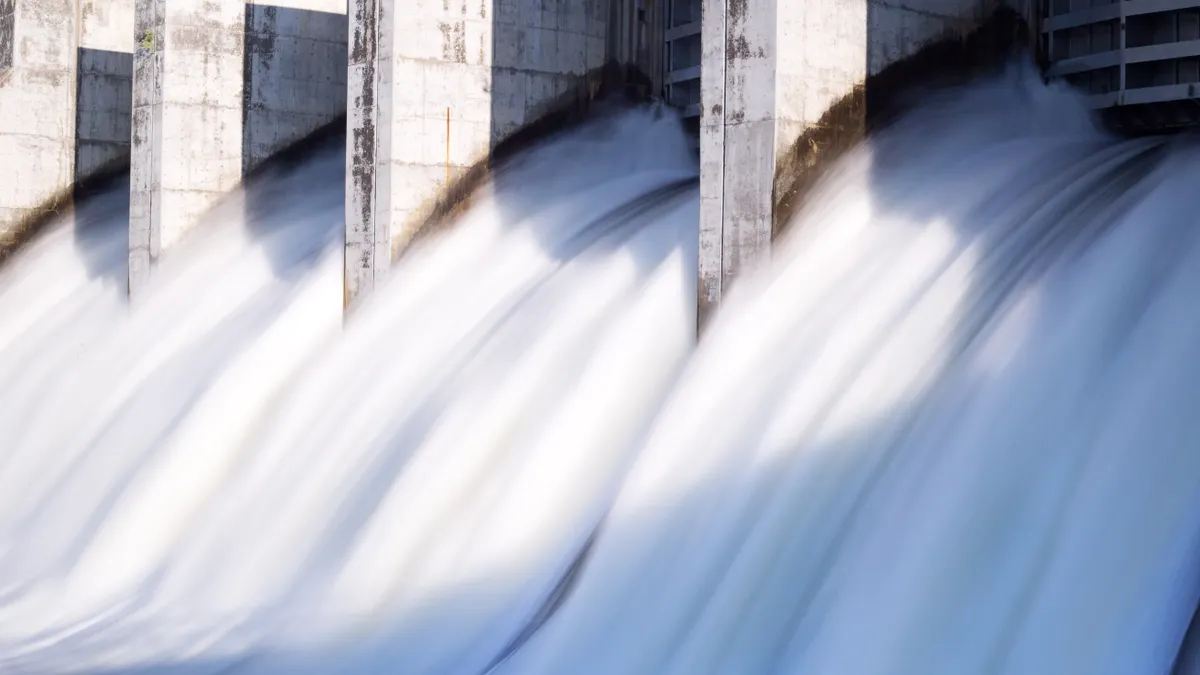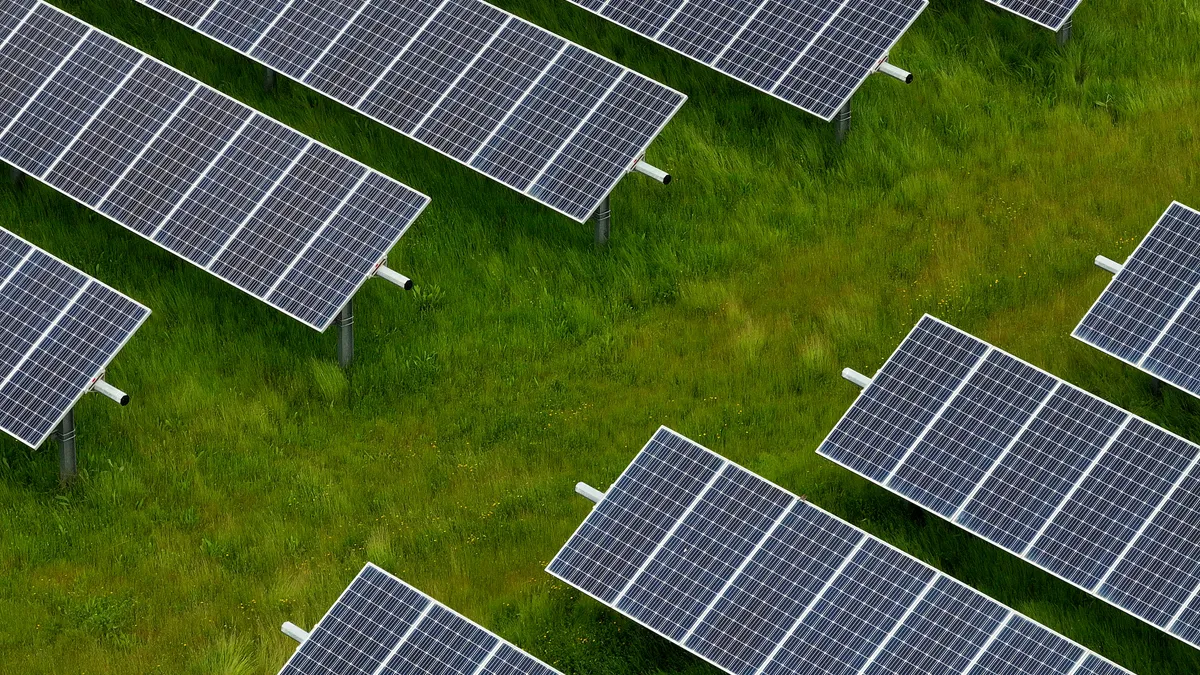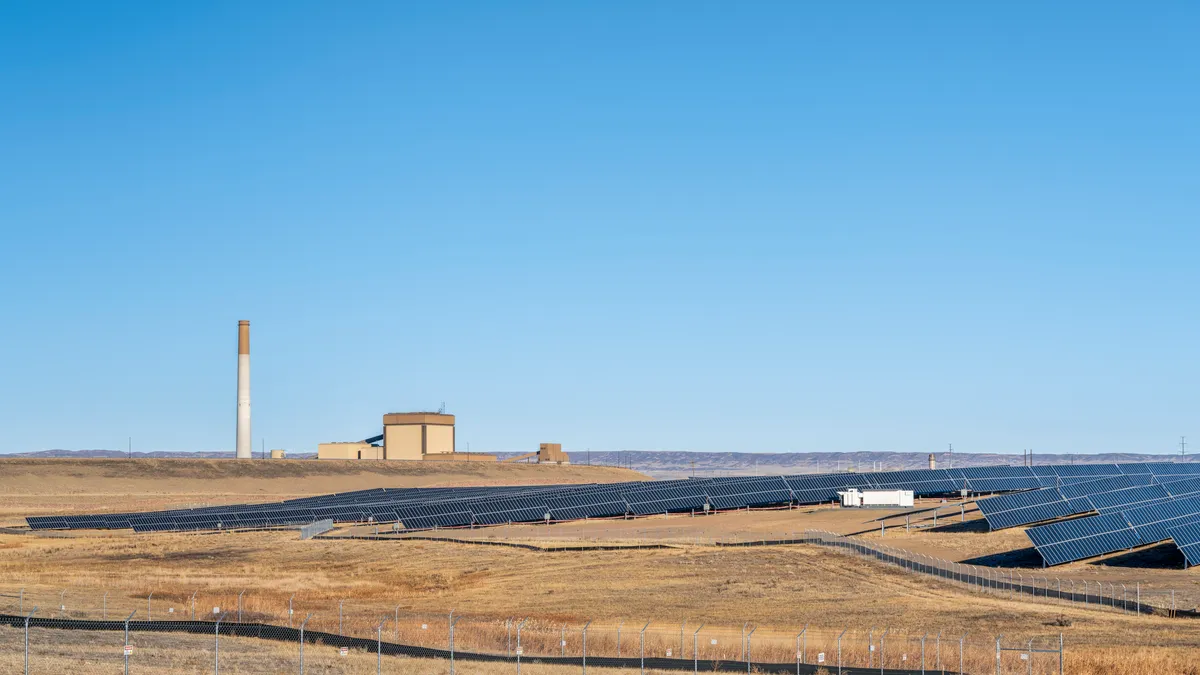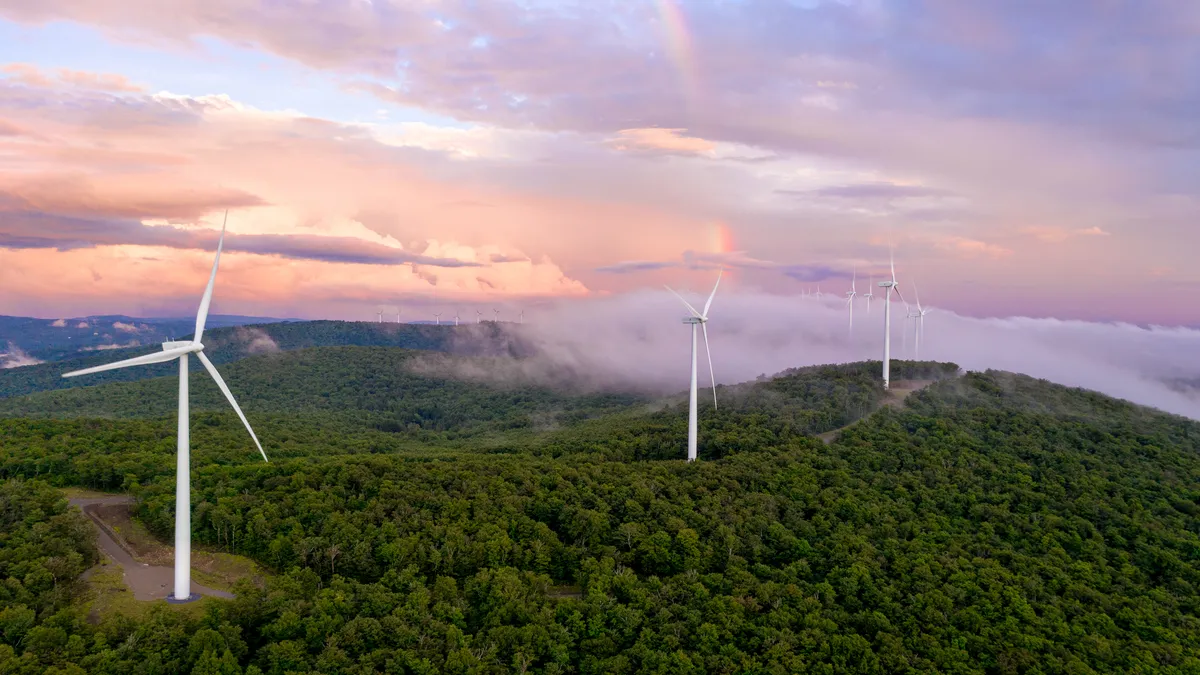Update: This article's headline has been clarified to more accurately reflect Charlie Gay's statement on SunShot's future.
President Trump’s proposed budget takes aim at a popular Department of Energy program designed to boost solar energy.
Last week, the Trump administration rolled out a proposed budget for 2018 calling for deep cuts in federal agencies, particularly the U.S. Environmental Protection Agency and the Department of Energy. The budget would trim only 6% from DOE’s overall budget, but targeted its deepest cuts to popular clean energy programs and the Office of Energy Efficiency and Renewable Energy (EERE).
Naturally clean energy advocates are nervous the administration could succeed in hacking away at renewable energy funding. As the budget proposal weaves its way through Congress, another incident has incited more worry: the DOE’s grid resiliency study, which critics say is an effort prioritize baseload fuels at the expense of renewable energy.
As these events unfold, one program in particular could see drastic cuts, which, if passed, would have wide-reaching implications for the solar sector.
DOE’s SunShot program could see cuts up to 71% if the fiscal 2018 budget is passed. The SunShot program was originally created to cut solar energy costs 75% by 2020.
Created in 2011, the popular program, combined with other DOE initiatives, managed to reduce solar integration costs by 60%. Some utilities participated in popular initiatives under the SunShot umbrella, the most notable of which is the Sustainable and Holistic Integration of Energy Storage and Solar PV program (SHINES).
For example, Texas utility Austin Energy used SHINES funding to test new technologies in a pilot platform to enable integrated distributed energy resources such as solar, storage, and smart inverter technologies.
Now solar interests are gearing up for a long battle to protect this funding source and stake out a voice on the ongoing grid study to be released at the end of June. In the meantime, SunShot’s director Charlie Gay strikes a more encouraging tone about the future of the program.
“I don’t know how the new administration will want to orchestrate the lines of responsibility,” he told Utility Dive at the GTM Research Solar Summit last month. “But the imperative is here that we connect the dots ever better than they have in the past.”
Solar energy program woes
Earlier this month, the Trump administration proposed its budget for the upcoming 2018 fiscal year, following through on promises to trim fat around agency operations and roll back environmental and climate regulations.
While the EPA took the some of the most serious cuts, the DOE also faces deep reductions in several arenas, including EERE and SunShot. EERE will see a 69% reduction in funding, while SunShot took a 71% cut.
It’s likely the proposal will be dead upon arrival, similar to most presidential budget proposals. But it does highlight the determination of the Trump administration to follow through on his promises to slash government spending and support the fossil fuel industry.
“I have confidence that they will not go through the way they are proposed,” said Christopher Mansour, vice president of federal affairs at the Solar Energy Industries Association (SEIA). “I just don’t see there’s [enough] support from Republicans and Democrats to see these cuts go through.”
The current budget Trump proposed for fiscal year 2017 already faces setbacks in both Legislative chambers, Politico noted, though that budget proposed milder agency budget cuts, leaving programs like SunShot mostly unscathed.
DOE’s Gay deflected a question about the proposed 2018 cuts for the EERE (the interview took place before the White House officially announced the budget proposals), pointing to his 43 years in the solar industry as a sign of the industry’s staying power.
“What the role of SunShot is to advocate for the PV piece and my role to is to advocate on the competition of ideas and results and keep the portfolio [moving forward],” Gay said.
Back to the grid resiliency study
The budget is a sensitive subject for many Trump administration officials, and Gay was more comfortable talking about the DOE’s grid resiliency study – a topic that has sparked fury among stakeholders, particularly clean energy advocates, for its lack of stakeholder participation.
“We ought being doing this more often,” Gay said. “The world is changing so fast that we’re operating a grid system that was basically defined by Samuel Insull in 1885, and a lot has changed since then and a lot has changed in the past five years.”
The study is taking a look at wholesale market evolution; whether wholesale and capacity markets are “adequately compensating” on-site fuel supply and other factors strengthening grid resiliency. While these examinations seem somewhat benign, it is the third focus of the study that has many people up in arms: evaluating how federal tax incentives, subsidies and regulations “are responsible for forcing the premature retirement of baseload power plants."
Already, clean energy advocates fear the outcome of the review is predetermined: the author tasked with writing the report is Travis Fisher, a noted critic of renewable energy. Fisher wrote in a 2015 report for the conservative Institute for Energy Research that renewable energy is “unreliable” source of electricity and that policies supporting renewables are “the single greatest emerging threat” to electric reliability.
Gay disputes the notion that no one will have a voice in the process, but the voices appear to be confined only to DOE employees. Earlier this week, the New York Times reported the study will consider input from DOE labs and the Energy Information Administration, but not from state regulators or regional grid operators.
“We all have a voice,” Gay said, “all the folks at DOE have a voice in this process as well as our national lab system.”
Will SunShot survive?
As SEIA’s Mansour noted, the proposed budget will likely not happened as is. Trump proposed similar massive cuts in his budget for the fiscal year 2017 — which also has yet to pass Congress.
A last minute budget compromise preserved in varying degrees favorite programs such as DOE’s Advanced Research Projects Agency-Energy (ARPA-E). That early-stage technology development program was slated for outright elimination.
But it could be argued SunShot is a victim of its own success — the program is well on its way to achieving its original goal and even extended those targets under the Obama administration. DOE did not respond to a request for comment on SunShot’s future at the time of publication.
But Mansour said SunShot is still necessary to ensure successful integration of solar, particularly distributed solar — and plays a big part in streamlining permitting and interconnection processes.
“By reducing the amount of paperwork you have to do … that reduces costs overall to the homeowner,” Mansour said.
Gay isn’t worried, however, about the future of SunShot under the Trump administration.
“I’m tackling it in the same straightforward way I have [for the] 43 years I’ve been in solar and the people... I report to in the new administration are not unlike the people I reported to in the industry. I’m pretty comfortable with the predisposition of people challenging of what I do.”
Asked if he believed SunShot had a future under the Trump administration, he grinned.
“I bet my life on it.”


